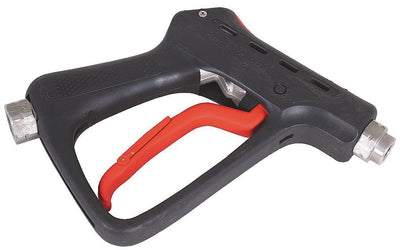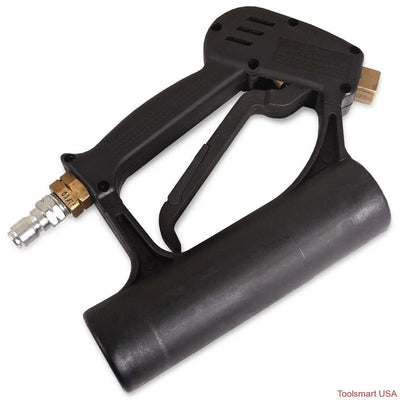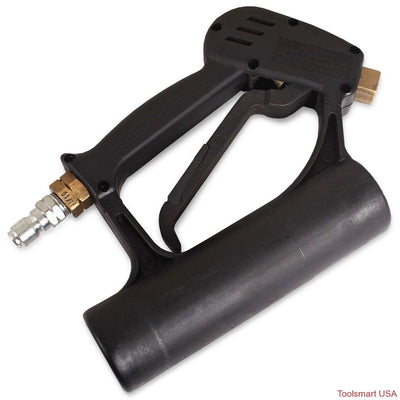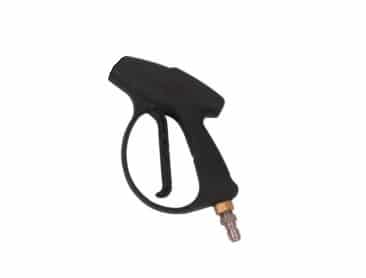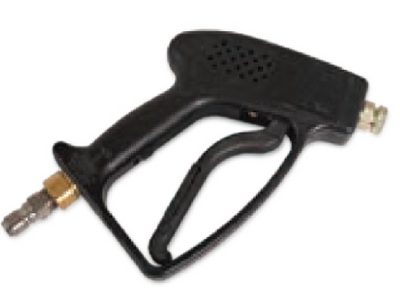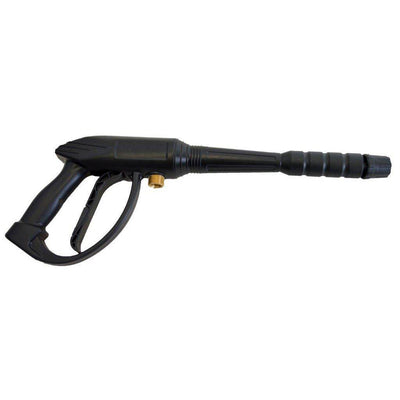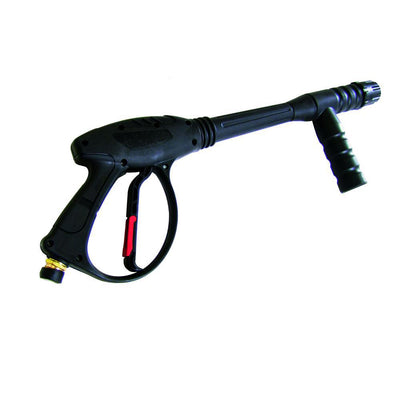Spraying Polyurethanes – A Guide
Polyurethanes are a popular finish in wood working. They work as a protective coating for a lot of wood projects. Depending on the formulation your polyurethane can be used to protect from water/ spills, or used to protect against water, spills, and fading due to sunlight exposure. Polyurethane can also be heat resistant making it a good coating for kitchen tables.
A common question that woodworkers have is whether or not you can effectively spray polyurethane. After all, polyurethane is often a little bit of a thicker coating when compared to other protective wood finishes like lacquers. However, spraying provides a lot of benefits that may make it worth considering when applying polyurethane, especially if you plan on applying a high volume of polyurethane. The benefits of spraying over hand applying can include faster production and a finer finish appearance.
Factor 1 When spraying polyurethane -Equipment Selection
if you are going to spray polyurethane frequently, you will want to evaluate your options of application equipment. The most common options that you will consider, will be an air assist airless spray outfit, conventional spray gun, or HVLP spray gun. If you’re looking for the highest production of the options, will want an air assist airless spray outfit. If you are looking for the greatest versatility at a lower price as far as being able to spray polyurethanes along with paint or even glue, you typically want to consider a conventional spray gun. If you will be spraying polyurethanes or other coatings that are thinner than a polyurethane, an HVLP spray gun will help keep your coating costs down and apply finish well. You will also potentially want to consider an HVLP for field work as they come in turbine styles that are portable which make them well suited for the field. You can also consider a gun that will allow you to spray in both conventional or HVLP, like the Binks Trophy Gun which allows you to change from conventional to HVLP by changing the air cap.
You can learn more about whether HVLP or Air Assist Airless would be better for your application by reviewing this guide here. In addition, if you select a spray gun, you want to consider how you feed material to the spray gun. The most common options include via pressure, gravity, or suction. Due too polyurethanes being a heavier body coating, we would recommend considering a pressure fed spray gun. If you want to further consider other options, you can get a general overview of the differences between suction, gravity, and pressure Fed spray guns by reviewing this guide here.
Factor 2-Preparing the polyurethane for spraying
Due to polyurethane being a thicker coating, you may need to use thinner to reduce the material’s viscosity so that it can be sprayed well. The easiest way to know whether or not you may need to add thinner is by trying to spray the material without any thinner being added. If while trying to spray the material without thinner you get large clots or orange peel appearance in the finish, you’ll typically want either to consider adding thinner or trying a slightly higher air pressure. You may also need to add thinner if you’re trying to spray with a gravity or suction feed spray gun and are unable to get material to flow from the fluid nozzle.
If you determine you need to add thinner, you want to reference the coatings technical data sheet which will commonly list appropriate thinner’s or at least a proper cleaner which can also typically be used as a thinner. Thinning of polyurethane will vary depending on a variety of factors, but typically thinning can require 10% or more thinner to achieve a thin enough polyurethane for spray applications. The best guidance will be your coatings technical data sheet and how the coating is spraying visually.
Factor 3-Application technique guidelines
To achieve the best results when spraying polyurethane, you want to try to focus on applying as thin of coats as possible. This will typically require making faster passes across the product surface, as well as using smaller fluid nozzles (1.0 – 1.4 mm typically) or air assist airless tip sizes. Thin coats will help eliminate or reduce problems like runs in your finish. In between various coats of polyurethane, you will want to sand (typically with about a 220 Grit sandpaper) as this will help provide a surface for the next coat of polyurethane to adhere to. To achieve the protective performance of polyurethane, you want to build the coating thickness up. However, you’ll build thickness by applying multiple thin coats. If you will be using a water-based polyurethane, you want to raise the grain and then sand it down prior to applying your first coating of polyurethane, this will help prevent raised grain which can create an ugly finish. You also want to be careful not to apply to many coats of polyurethane, the typical number of thin coats is around four.
In addition to how the coats are applied, your technique when applying will have a significant impact on the quality of finish and its appearance. If you will be using a spray gun, you’ll typically hold the gun closer, while if you are using an air assist airless, you’ll hold the spray gun further from the product surface. Ultimately is recommended to practice spraying with your equipment on a non-final version of a product so that you can best learn how your coating can be sprayed.
Factor 4 – Where you Spray
Polyurethanes are typically slower drying coatings in comparison to other wood protective finishes. The extra dry time that’ll take for the polyurethane to cure will require keeping the product separated from exposure to dust so that your finish does not get ruined. Additionally, you can typically expect a longer time to complete the coating application due to longer dry times.
Final Thoughts
By considering your application equipment, technique, where you spray, and characteristics of your polyurethane, you can ensure that you will apply your coating in a more efficient and better appearing way. Have you ever tried spraying your own polyurethanes, and if so what have the challenges been? If we can help with any questions related to spraying polyurethane, feel free to contact us


